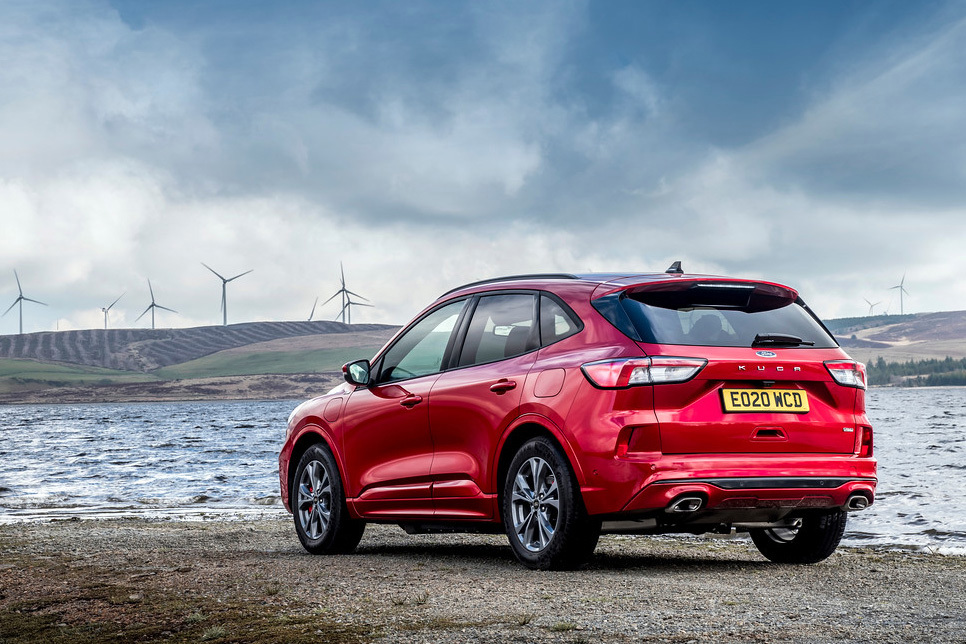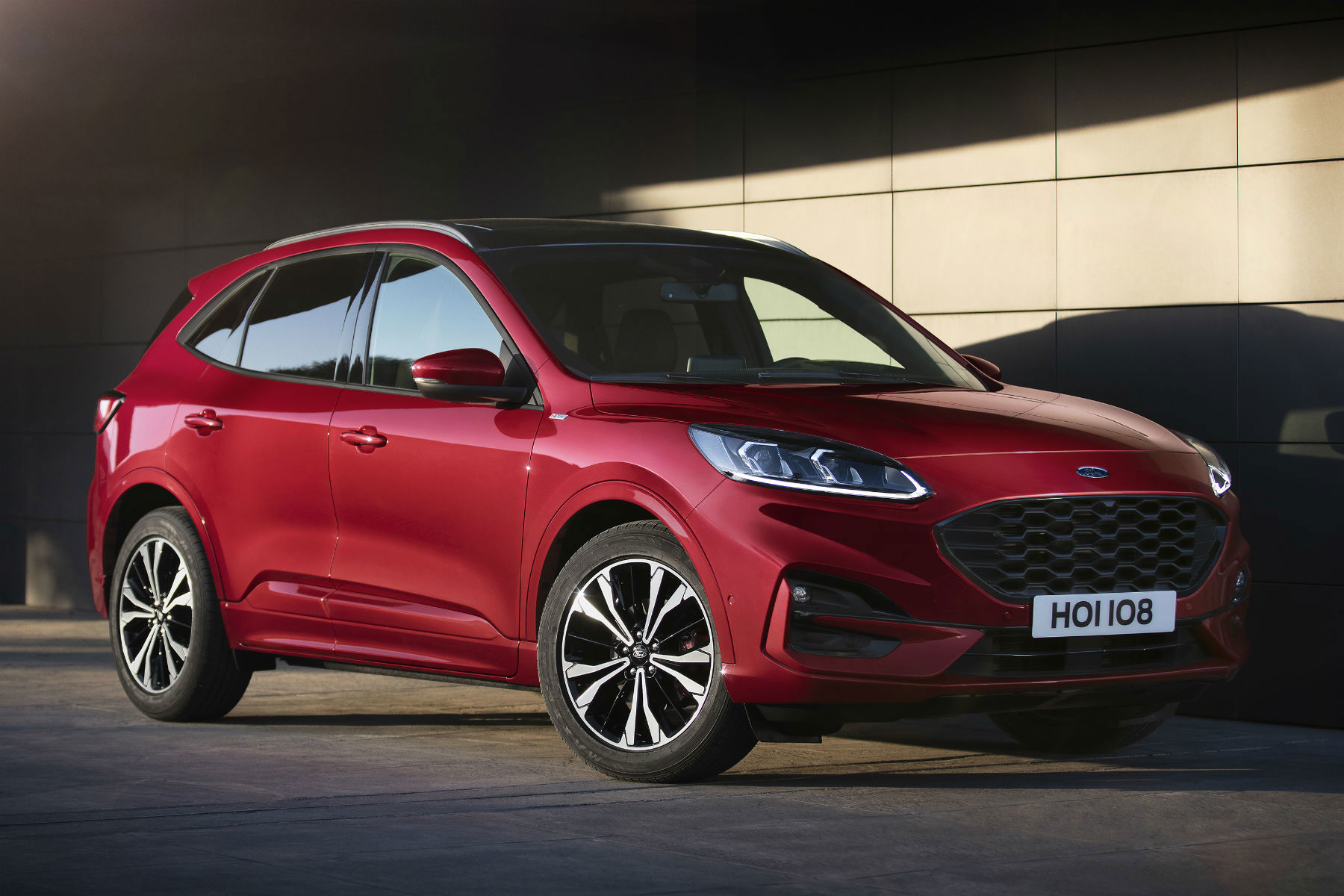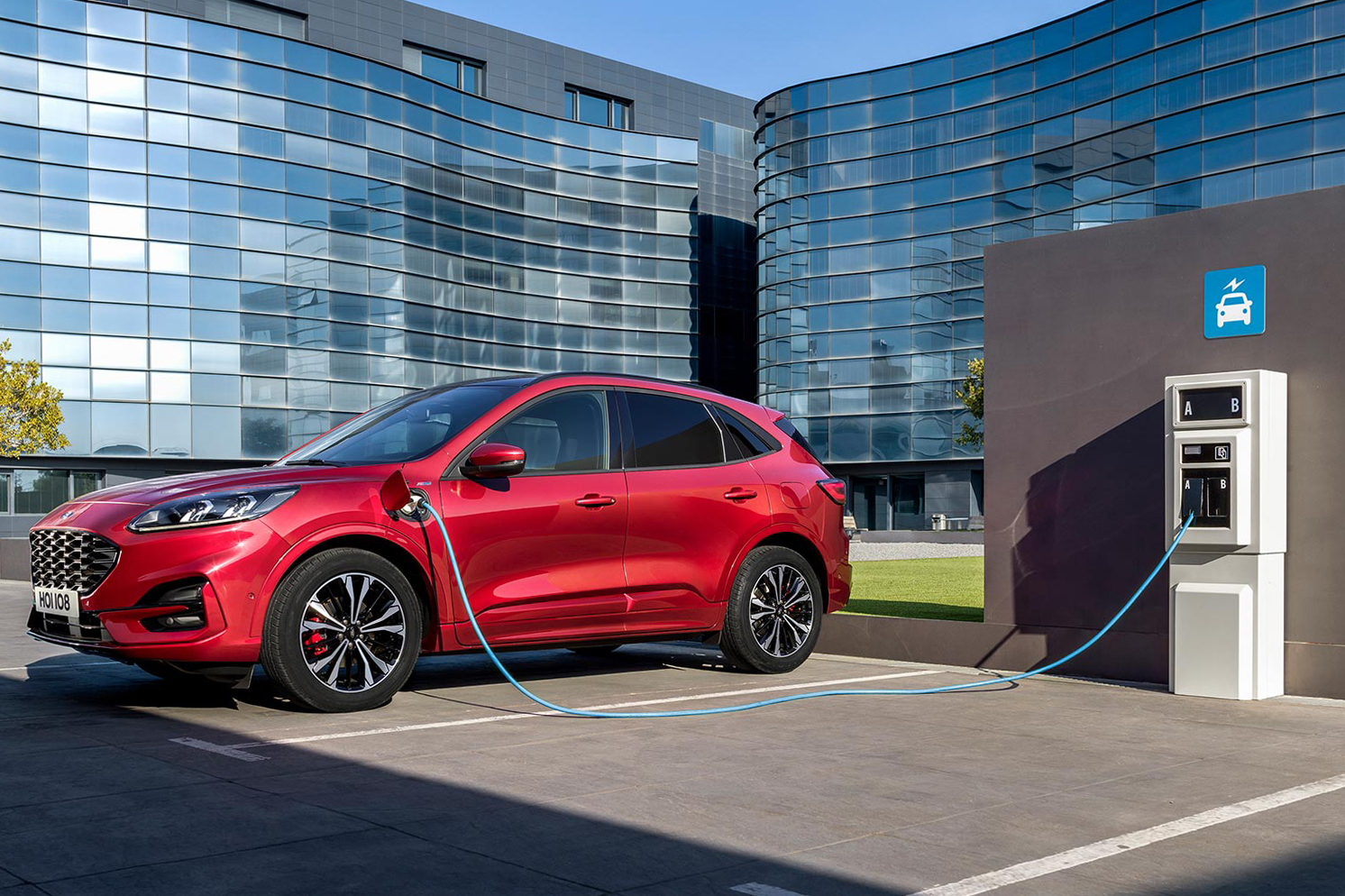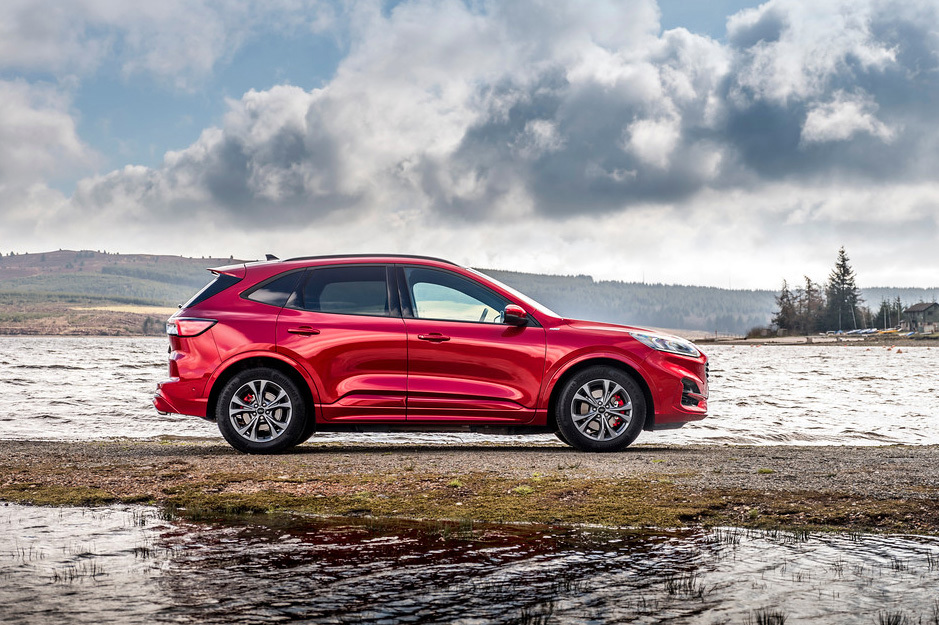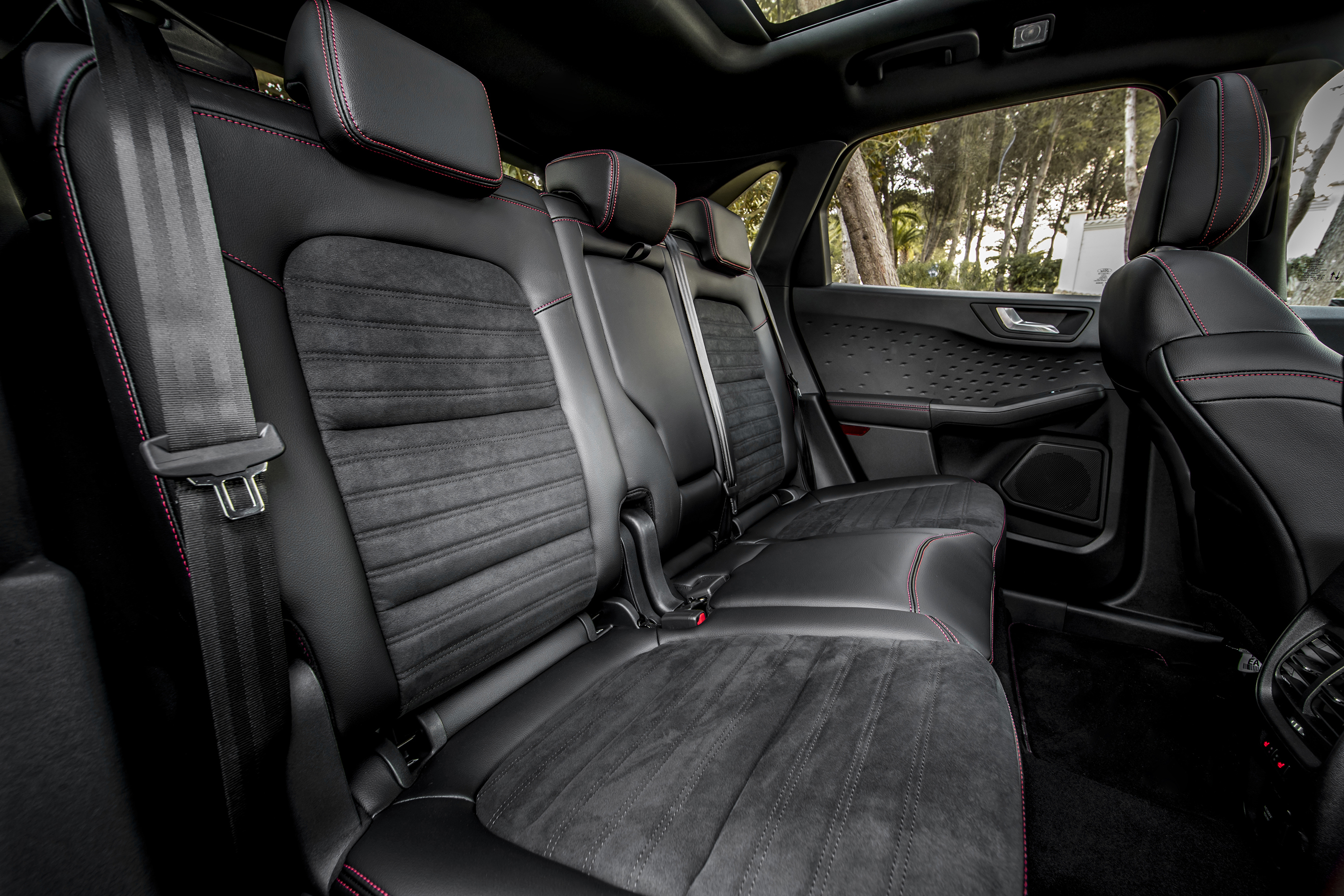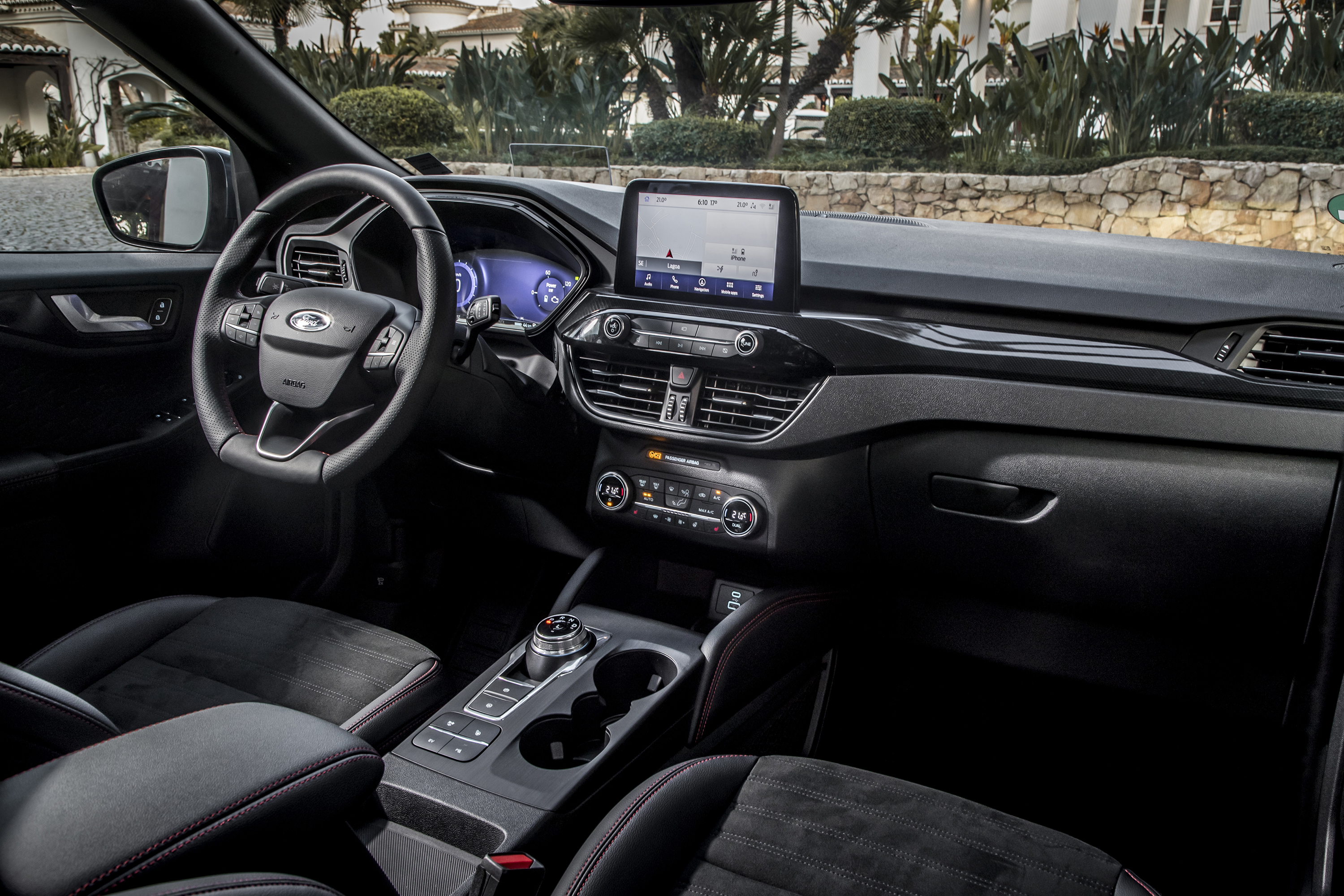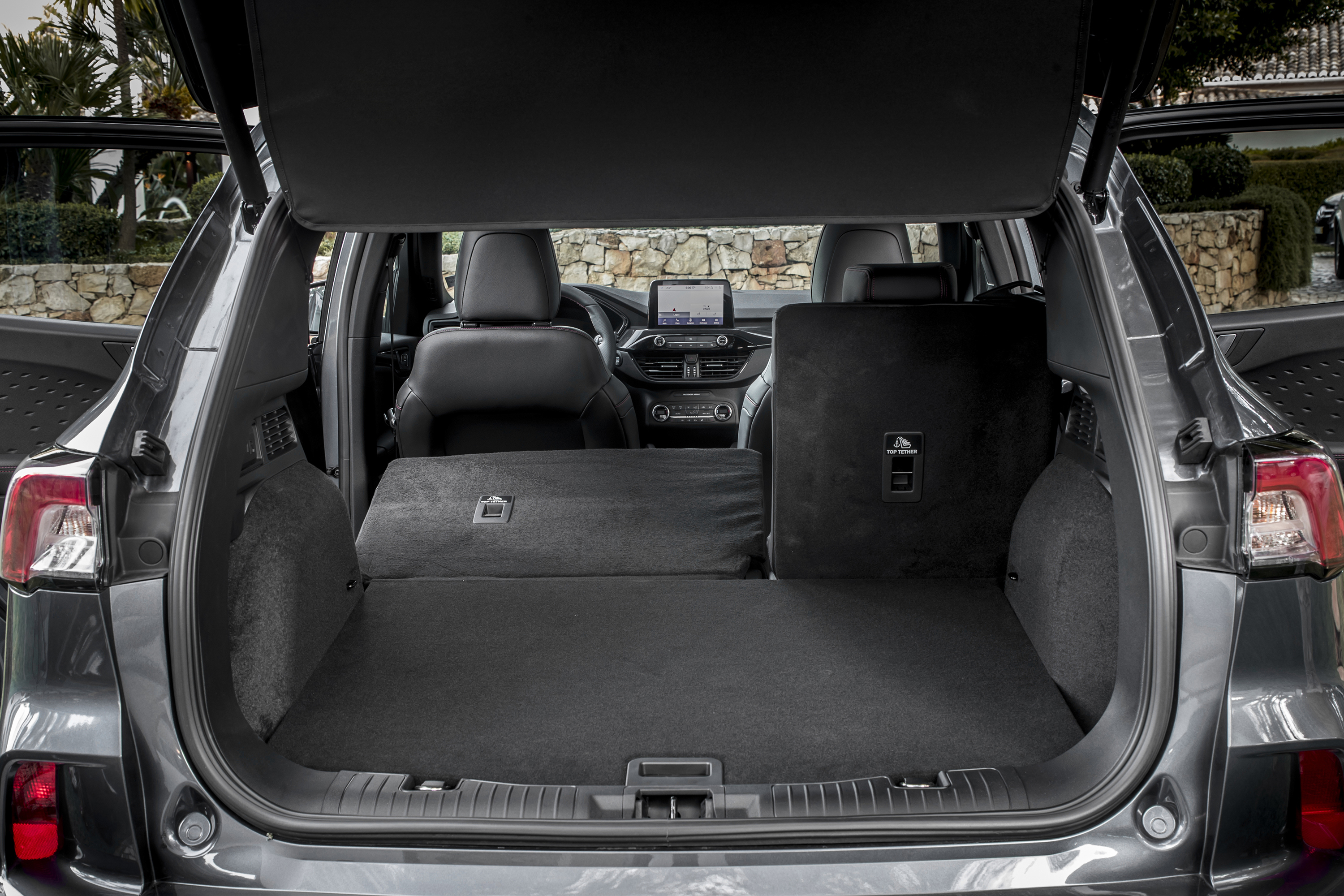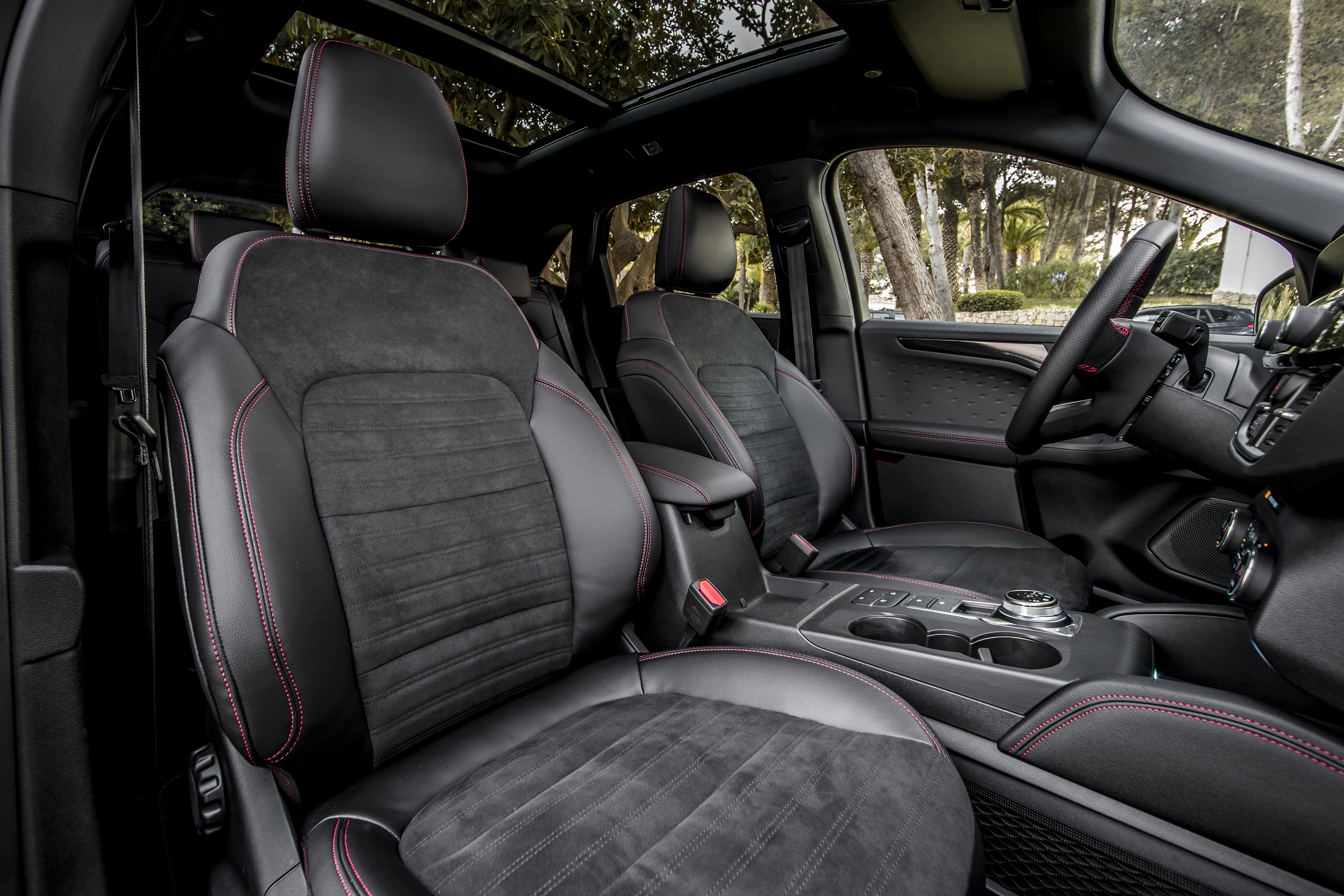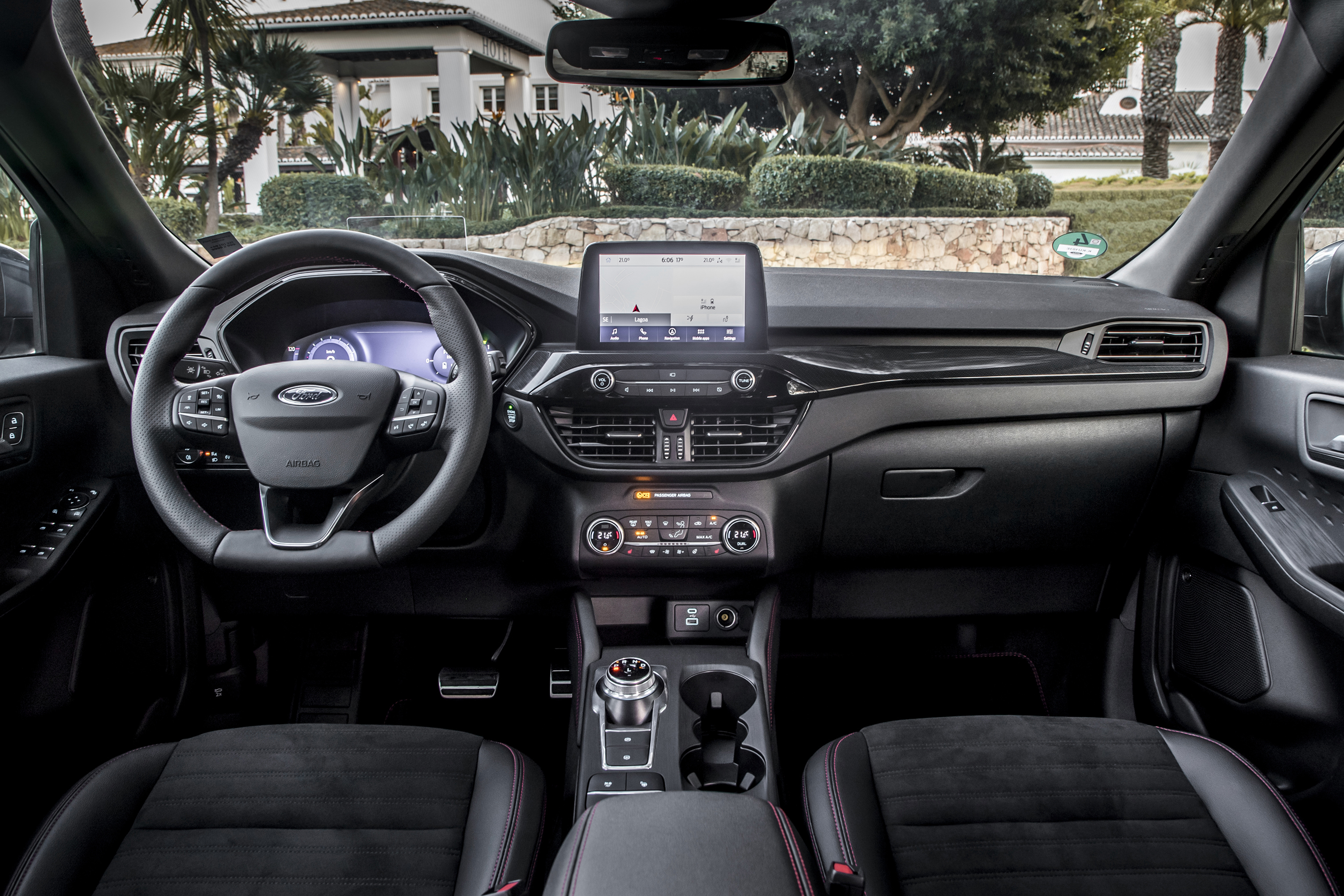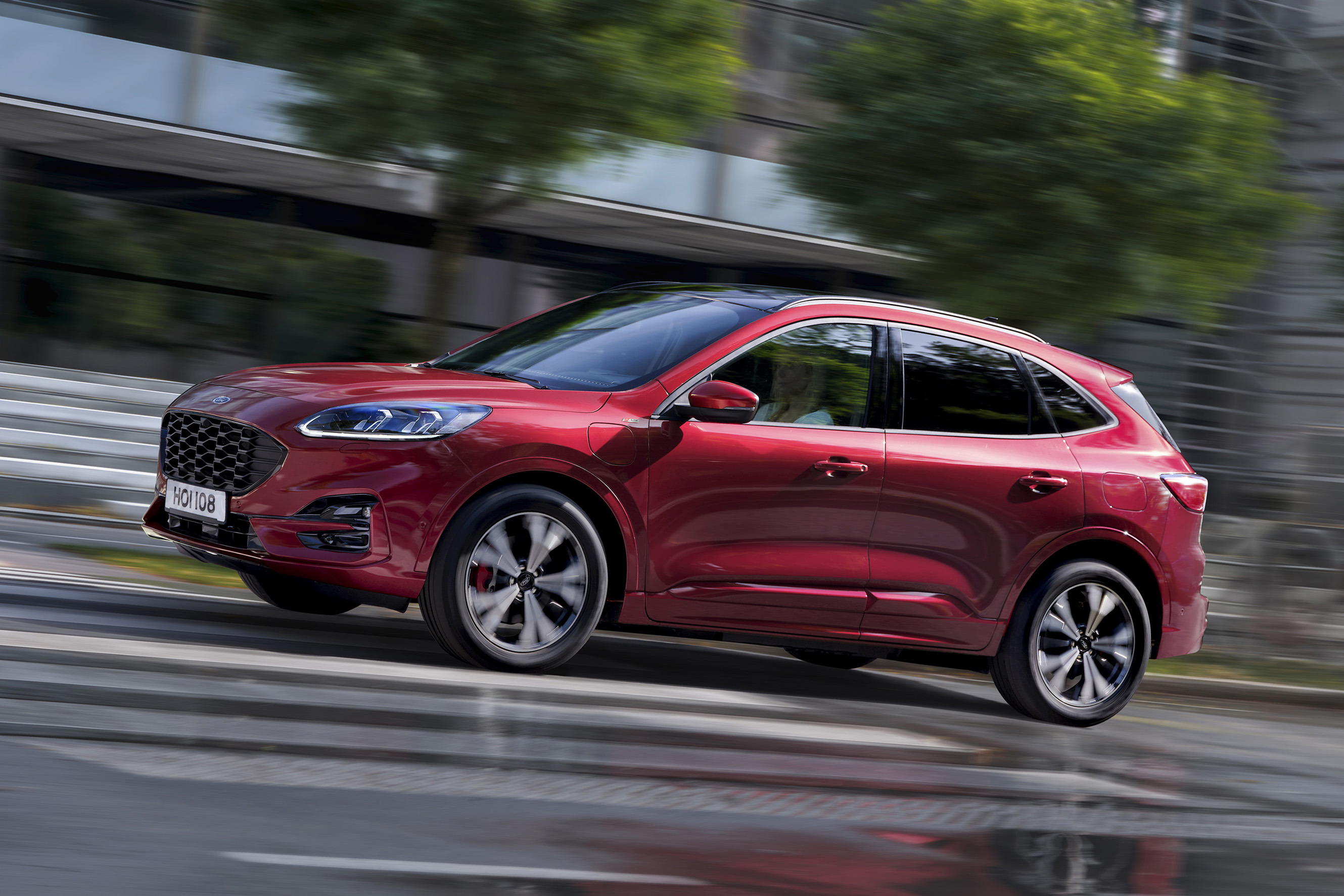.jpg?rmode=max&width=500) At first glance, the RAV4 looks expensive next to the Kuga, but you need to remember the Toyota only comes as a plug-in hybrid and that puts it into direct contention with the Kuga PHEV. The hybrid power makes the RAV4 very frugal and it’s also noted for its exceedingly good reliability record, making it ideal for those paying with their own money. It’s not all roses, however, as the Ford infotainment is way better than the Toyota’s to use and navigate, and the RAV4 has none of the driving pleasure of the Kuga.
At first glance, the RAV4 looks expensive next to the Kuga, but you need to remember the Toyota only comes as a plug-in hybrid and that puts it into direct contention with the Kuga PHEV. The hybrid power makes the RAV4 very frugal and it’s also noted for its exceedingly good reliability record, making it ideal for those paying with their own money. It’s not all roses, however, as the Ford infotainment is way better than the Toyota’s to use and navigate, and the RAV4 has none of the driving pleasure of the Kuga.
Ford Kuga review 2024
Quick overview
- Fine ride and handling
- Plug-in hybrid’s low emissions
- Comfy cabin
- Boot not as big as key rivals
- Zetec model misses some kit
- Some cabin materials feel low-grade
| Search used Ford Kuga for sale |
As soon as the Ford Kuga first arrived in 2008, it was a sales hit and it’s remained one of the prime movers in the large SUV sector ever since. Much of this success is down to the Kuga moving with the times and, as a result of this, Ford dropped the diesel engine options for the Kuga line-up towards the end of 2021. This leaves new buyers with a choice of a single petrol-only 1.5-litre EcoBoost engine and two petrol-electric hybrid models.
If you can afford the push the budget for the plug-in hybrid, you’ll enjoy very low running costs. Even with the other Kugas, you get the same raised driving position that so many love in an SUV, plus there’s plenty of cabin space in the front and back. Only a slightly smaller boot than some of the Ford’s main rivals lets the side down here, and there are a few bits of interior trim that are not quite up the quality of the rest of the car.
Among the Ford’s key opposition is the Nissan Qashqai, Toyota RAV4 and Volkswagen Tiguan, and the Kuga also has an eye on the likes of Audi, BMW and Volvo with its upscale Vignale trim. That’s a tough crowd to mix with, but the Kuga earns its place with a variety of trim levels to help you fine tune the car’s equipment levels to your needs and pocket. There are also plenty of options you can add over and above this, which is another common factor with Ford cars.
Every Kuga comes with Ford’s excellent and easy to use SYNC 3 infotainment system. The 8-inch touchscreen is clear and simple to navigate, and it lends an air of sophistication to the Kuga’s dash. You also get a 12.3-inch main dash display in all but the most basic Kuga models, so it’s a car that’s very in keeping with its times while not doing away with the best of tradition controls for the ventilation and heating.
Infotainment, comfort and practicality
The Ford Kuga driver enjoys an elevated view of the world from behind the steering wheel. Where other SUVs in this sector often give the impression of being raised up but then have a lower-slung seating position, the Ford delivers the goods for excellent all-round vision. There are also front and rear parking sensors as standard on all models to help out in tight spots.
The steering wheel adjusts for angle and depth, and the driver’s seat has a full range of movement to help you get the ideal driving position no matter what height you are. Taller drivers will also find the Kuga is generous with its leg and head room. In the rear, the Kuga has plenty of space for kids and adults, so taking the family on longer trips is hassle-free. With the ST-Line models, you get a mix of seat upholstery material, blending fabric and Sensico faux leather with red stitching for the sports seats. The Vignale is the only Kuga to comes with leather seats as standard. However, all have Ford’s superb Quickclear windscreen included that makes defrosting the car on wintry mornings fast and simple.
The rear bench seat’s base slides fore and after to vary leg and boot space. Look in the boot and it’s about average for the class when it comes to capacity, but then the class average is pretty generous and you’d have to choose something like the Hyundai Santa Fe if you need more space than the Kuga.
Back in the driver’s seat, the 12.3-inch digital dash main display that is standard on all but the Zetec trim is easy on the eyes and clear to read in bright sun and at night, and you can scroll through various on-screen menus using the steering wheel buttons to check the usual spread of driving information or to work some of the infotainment’s functions. Set high in the centre of the dash, Ford’s SYNC 3 infotainment touchscreen is 8-inches across, so it’s clearly visible without being distracting. Logical menus with on-screen shortcut buttons make it a doddle to operate and you can pair your smartphone with Apple CarPlay or Android Auto. Ford also sticks with physical rotary dials for the volume and tuning, so this you can adjust the stereo on the move without taking eyes from the road.
Beneath the infotainment screen are more clear dials for the heating. Underneath this is a large cubby with twin USB ports, while a double cupholder sits in the centre console next to the gear lever. With the automatic gearbox, gears are selected with a round control that soon becomes second nature to use.
2020 Ford Kuga engines: how does it drive?
Since Ford removed diesel engines from the Kuga range at the end of 2021, there’s a bit of a large gap between the 1.5-litre EcoBoost turbo petrol engine that kicks off the range and the two hybrid models that use a 2.5-litre petrol motor coupled to an electric motor. On the road, the difference is less noticeable as the 150hp 1.5-litre engine does a decent job of pulling the Kuga along. The downside here is you have to work this engine a bit harder to keep pace with traffic on faster roads or when joining the motorway, which can have an impact on fuel economy.
There are two hybrids to pick from, starting with what Ford calls a FHEV (full hybrid electric vehicle). The name is a little confusing as this mix of 190hp 2.5-litre petrol engine and electric motor combo offer very little EV-only driving. The EV side of the equation is there to allow for longer periods when the engine can remain switched off as part of the stop-start function and for the Kuga to pull away gently on battery power. As soon as you demand more acceleration, the petrol motor comes into play. It does this with no obvious interruption to the drive and is the model that makes sense for many private buyers who don’t need the outright fuel economy of high-mileage company users.
For business drivers, the PHEV (plug-in hybrid electric vehicle) version of the Kuga is wise choice. It still has the 2.5-litre petrol engine, but it also comes with a much bigger battery so it can drive for up to 39 miles on a charge. This is idea for getting around town with zero tailpipe emissions and even for longer commutes as you can plug in the car to recharge for the return journey. This model also feels the most brisk, while refinement is a strong suit in EV mode. With the petrol engine playing its part, noise is still kept at a low level and the Ford is more hushed than a Honda CR-V or Mazda CX-5.
As you’d expect of a Ford, the Kuga is one of the best handling cars in this class. It feels stable and composed as you turn into corners, even if the bend tightens up unexpectedly. There’s not as much steering feel as in a Ford Focus, but this won’t deter anyone as it makes the Kuga an easy car to use on long trips. Over bumps, the standard suspension set-up is smoother and more cosseting than the sports suspension of the ST-Line versions. The ST models are not uncomfortable or crashy, but you will notice more small ruts and ridges at lower speeds than in the other Kuga in the line-up.
Value for money: how much does a 2020 Ford Kuga cost to buy and run?
The Ford Kuga range follows a familiar hierarchy of trims, starting with the Zetec that has all of the essential comfort and safety kit you need. However, the Titanium Edition brings a few more creature comforts, such as the digital dash display, powered tailgate, reversing camera, and keyless entry.
The two ST-Line models, the standard ST-Line Edition and ST-Line X Edition, both have firmer sports suspension, and black roof rails to distinguish them. They also have Sensico and fabric seat upholstery with red stitching for a sporty appearance. On the other hand, the Vignale model is all about luxury, so it has leather seats, heated seats front and rear, electric front seat adjustment, heated steering wheel, and climate control. The Vignale also has its exterior look with unique grille and trim details.
The sweet spot of the range is the Titanium Edition with the addition of the Winter Pack to gain heated front seats and steering wheel. As a used car, this is also the model to seek out and you can find nearly new models with small mileages at Ford dealers for £6000 less than the list price of this model at £29,795. The only downside is there’s no hybrid option with this trim, so if you want the plug-in hybrid model you’ll need to spend from £36,905.
The extra spend on the plug-in hybrid will be offset by its low running costs as it has a claimed combined fuel economy of up to 282.5mpg and carbon dioxide emissions of 23g/km. With the FHEV version, those numbers come in at 51.4mpg and 125g/km, while the 1.5 EcoBoost offers 42.8mpg and 149g/km. In the 1.5 EcoBoost’s favour are lower insurance costs as it sits in group 14 in Zetec trim, while the hybrids go from group 21. Like all Fords, the Kuga will be less expensive than many rivals for servicing and Ford has a huge dealer network so you’re never far from a garage. All Kugas come with a three-year, 60,000-mile warranty.
Verdict: Should I buy a 2020 Ford Kuga?
The Ford Kuga is a car that should be on the shortlist for anyone looking for an affordable, very capable SUV. Its prices are pitched keenly next to most rivals and there are discounts available on new models, or you could save even more by choosing a nearly new Kuga with very few miles on the clock.
A comfortable, roomy cabin comes with plenty of safety kit and labour-saving devices, and Ford’s SYNC 3 infotainment system is one of the easiest in this segment to use. The Kuga’s boot is not as big as some and a few bits of interior trim that don’t feel as substantial as in rivals like the Honda CR-V or Mazda CX5. However, much of this is offset by the way the Kuga drives as it rides and handles with a polished manner.
The 1.5-litre EcoBoost engine offers an affordable way into the Kuga range, but the hybrid models are where the real savings are to be made in running costs. As a result, they are the ones to aim for.
What could I buy instead of a 2020 Ford Kuga?
Toyota RAV4
Citroen C5 Aircross

The Citroen C5 Aircross recommends itself for the strong value for money it represents in this class thanks to its very keen pricing. However, there are many other reasons to consider this large SUV, not least its bold looks that dare to stand out from the crowd. The cabin, too, is a pleasingly different take on the theme, while the Citroen’s ride comfort is among the best in the class. Frugal engines are also quiet at speed, matching the superb overall refinement of the Aircross. The supple ride comes at the expense of handling that’s nowhere near as sharp as the Kuga, and rear seat space is tight compared to the Ford’s.
Mercedes GLB

It’s not often Mercedes comes into contention with Ford, but the GLB does as its prices cross swords with the upper end of the Kuga range. There’s a lot to like about the premium badge of the GLB, and it has the practicality of seven seats. A classy interior appeals, while the engines are strong and easy on fuel. However, the Mercedes doesn’t offer quite the same levels of comfort as the Kuga due to its firm ride and front seats that feel a touch too narrow for most adults. It’s also not as refined at higher speeds as the Kuga.



